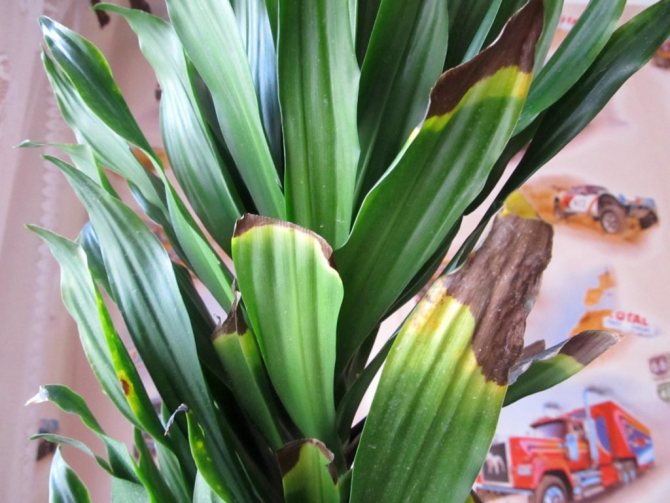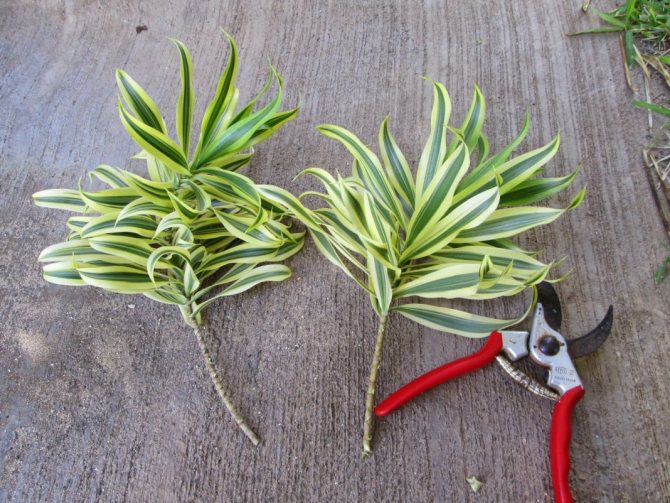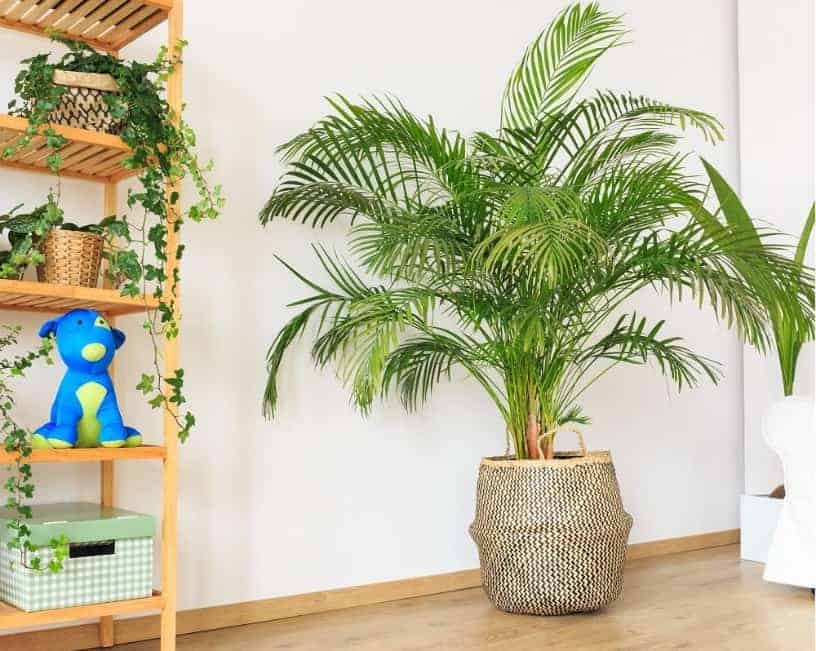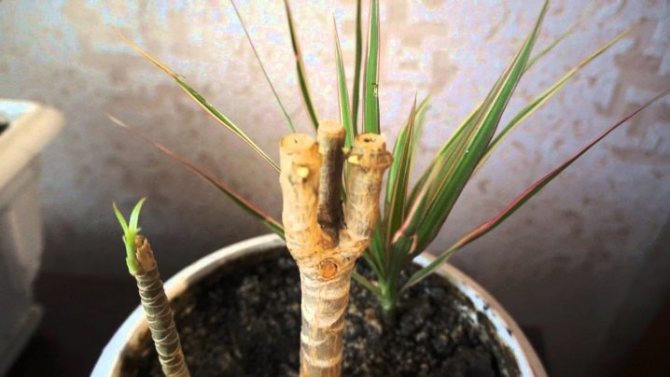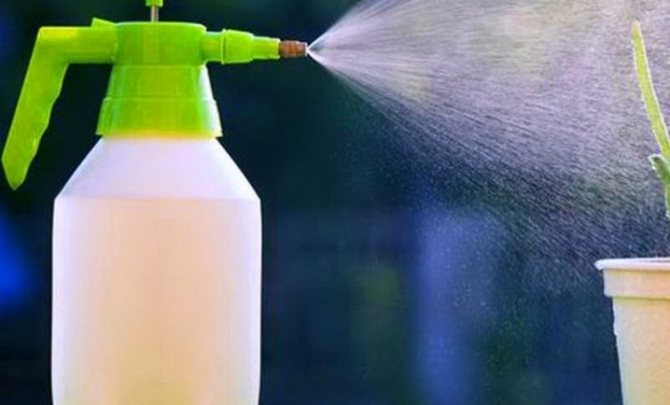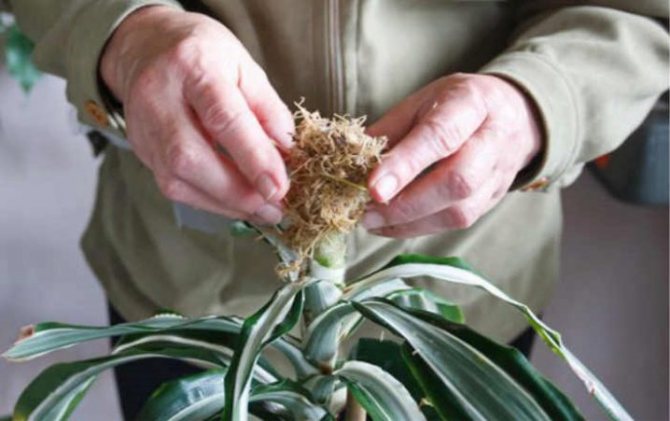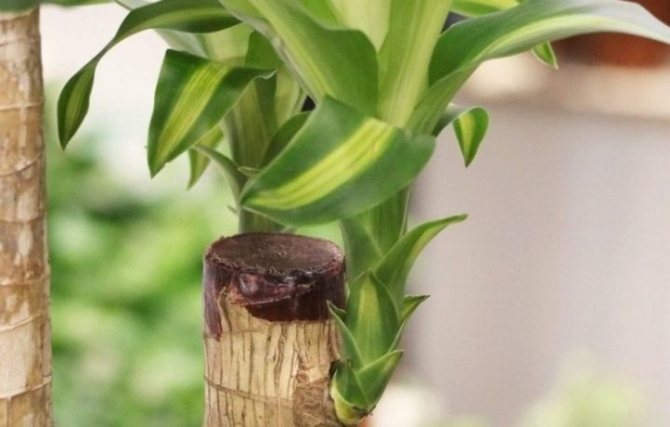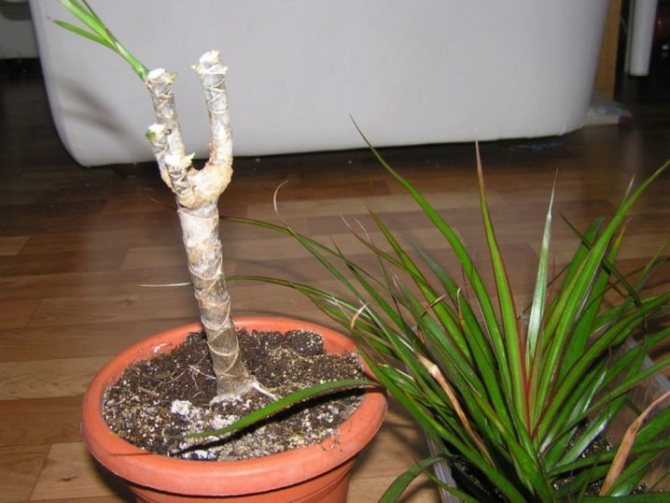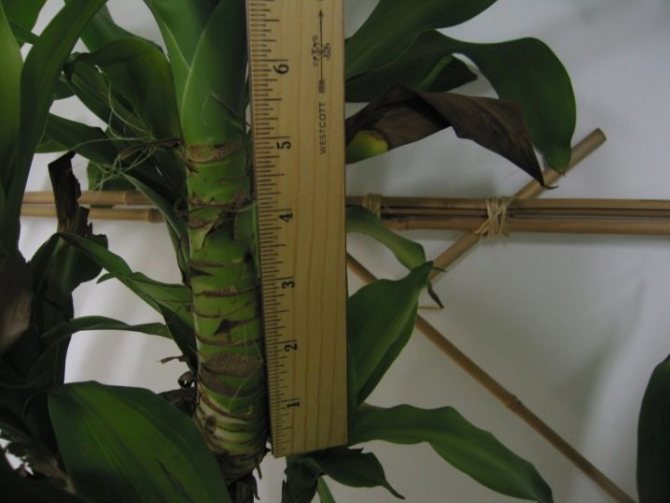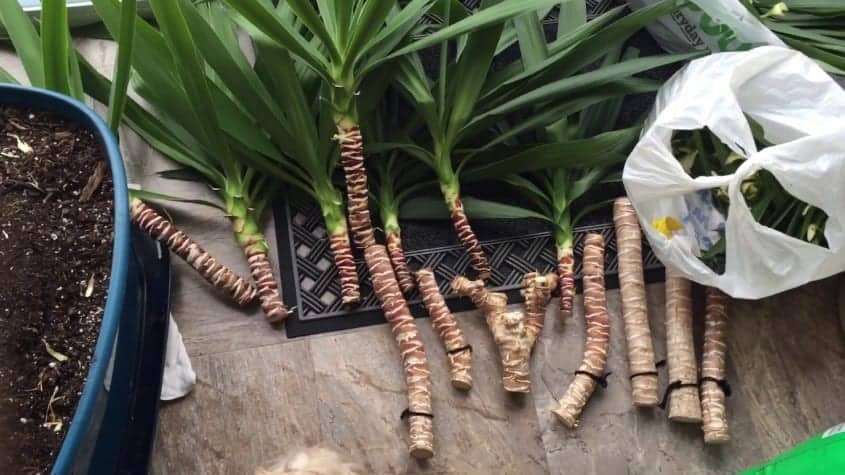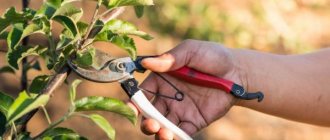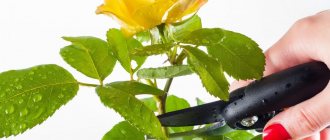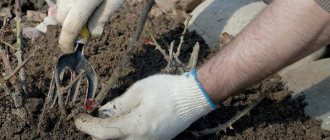Features of growing dracaena at home
Dracaena prefer to grow in a well-lit room, and variegated varieties will retain their color in a lighter place, green-leaved ones feel good away from a light source, but not in dense shade.
Water these plants abundantly when the topsoil dries out by 3-5 centimeters. Dracaena do not like waterlogging, but they respond well to spraying the crown. The best temperatures for their development are 20–25 ° C in summer and 16–18 ° C in winter. Dracaena are undemanding to the composition of the soil, but they develop best if the soil mixture consists of turf, sand and peat in a 2: 1: 1 ratio. A drainage layer is required at the bottom of the pot.
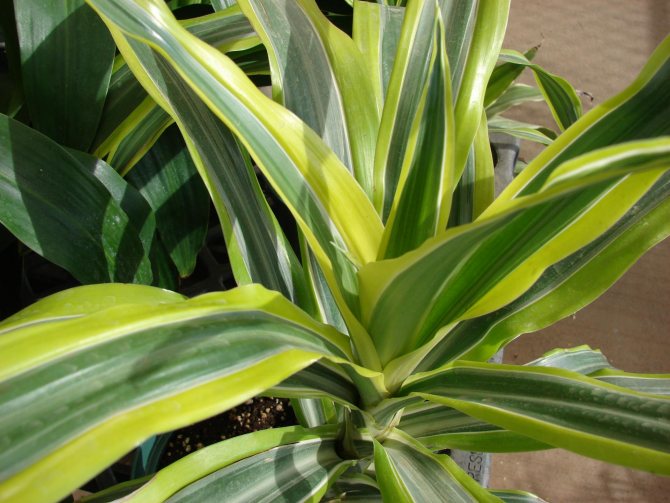
Dracaena can decorate any interior
The plant is fed during the growing season every two weeks, alternating a solution of organic and mineral fertilizers. In the cold period of the year, the dracaena begins a period of relative rest. It is necessary to reduce watering and cancel feeding.
How to prune and re-arrange a plant
With all the variety of forms and varieties of dracaena, they have a common feature: the trunk grows in height and branches extremely rarely.
Why cut dracaena:
- to improve the appearance, increase the decorative effect, the dragon tree is rejuvenated - the elongated shoots are shortened by pruning. Since the peculiarity of the plant is the dropping of the lower leaves of the crown with a fairly rapid growth, often the elongated shoots take on an unsightly appearance (bent, deformed, etc.);
- to form a lush crown. Dormant buds are located throughout the trunk of the dracaena, which are invisible to us. Removing a part of the trunk stimulates the awakening of such buds just under the cut, lateral shoots will appear from them, which, when they grow up, will increase the mass of leaves. By increasing the number of shoots, a more lush crown is formed;
- for growing a multi-stem plant and simulating bonsai. In this case, the trunk is cut off closer to the ground or at a low height, and then a crown is formed over the years;
- to preserve the plant. If the dracaena fell and broke or fell ill and began to die rapidly, to save at least parts of the plant, the tops or parts of the branches are cut off and rooted;
- for breeding. Apical and stem cuttings root quite easily, in addition, stem cuttings are capable of releasing lateral shoots from dormant buds.
Reasons for cutting a flower
Basically, the owner of the plant relies on his own opinion and taste. If, from your point of view, the dracaena has reached a considerable height, has a bare trunk with a bunch of leaves on the crown and has lost its former attractiveness, you want to update and rejuvenate the plant or get a multi-stemmed specimen of dracaena instead of a single-stemmed one, then with the help of pruning, you can adjust the height of the plant, the density of the crown and the whole appearance.
When should you prune?
There is an important rule: this procedure is performed exclusively on healthy plants and only during the period of active growth - in spring or summer. The fact is that during the growing season, the plant organism produces special substances for the construction of new cells, for the successful healing of wounds.In winter, during a period of low temperatures and a decrease in the intensity of sunlight, it is very difficult for a plant to endure such stress. And weakened plants may even die.
The only exceptions are emergencies. For example, when the dracaena is broken or damaged (rotted) the top (trunk), or if it rests against the ceiling with the top, then urgent pruning is allowed. In this case, it will be necessary to pay additional attention to caring for the plant so that dormant buds can germinate safely in the dracaena.
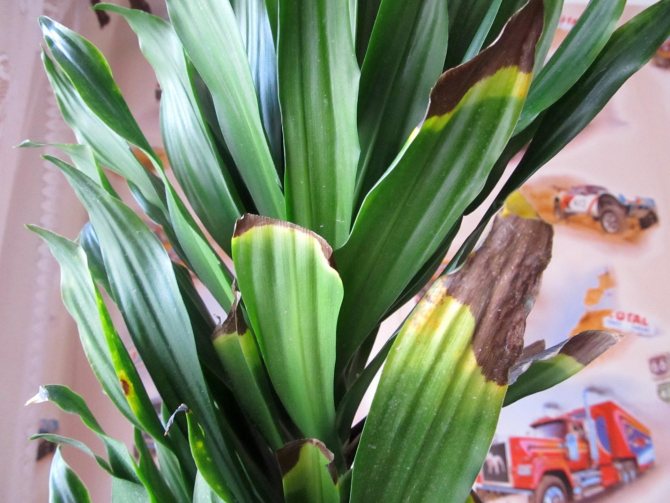

Dried or rotted dracaena leaves can be a signal for an emergency transplant.
No special in-depth knowledge is required to perform pruning on your own. It is advisable to just have an idea of the process.
What will happen if you pinch (stop) dracaena; is it possible to trim the top, shorten a part of the trunk, cut off the leaves?
Some plant lovers unknowingly call the separation of the dracaena apex by cropping or pinching. In fact, these plants are not pinched, but cut. They do this in order to subsequently root the part separated from the mother's body and get a new plant.
You can cut off not only the top. Trunks are often shortened. Parts of the trunk 12–15 cm long are capable of giving new shoots from dormant buds.
Dracaena leaves should not be cut off. It is in the leaves of plants that substances are formed to build new cells and tissues. Part of the crown is removed only on a cut cuttings if it is all leafy.
Imitation Dracaena Bonsai
Real bonsai has been grown for decades and is a form of art. Dracaena is used to form an imitation bonsai with the help of pruning, and this process will also take more than one year.
Getting a thick trunk
The main task is to build up a thick trunk. Since dracaena trunks grow in thickness rather reluctantly, it is necessary to provide optimal conditions for growth. The first is bright diffused light, the second is the temperature from 18 to 25 ° C, the third is watering as the soil dries, the fourth is top dressing. It is imperative to control the combination of these conditions. That is, the lighter, the warmer and more humid. With a decrease in light, you need to lower the temperature and reduce watering, this will prevent the plant from stretching in height.
How to form a tree
After 3-5 years, when the trunk of the dracaena at a height of 10-15 cm from the ground reaches a diameter of 4-5 cm, the trunk is trimmed. With proper care, several new shoots grow below the cut. Now these shoots will grow in height, and the trunk will thicken slightly. In the future, it all depends on the imagination of the grower. After a while, you can cut new trunks closer to the place of the first cut or away from it, at the same or at different levels, then repeat the pruning on all branches or selectively so that the dracaena can grow.
In this way, an original cascading multi-stemmed version of dracaena is created, reminiscent of a bonsai.
Photo gallery: growing dracaena bonsai
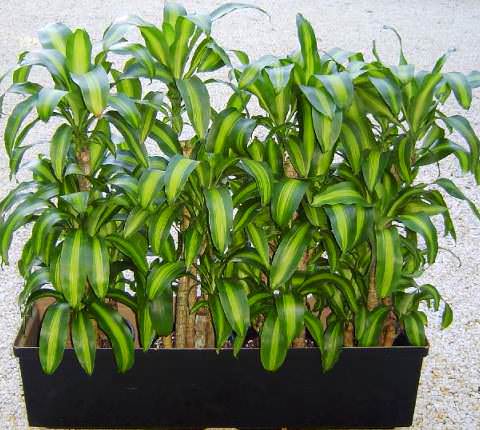

It will take several years to grow imitation dracaena bonsai
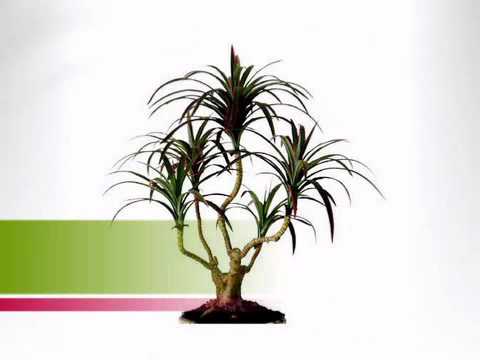

Cascading multi-barreled dracaena mimics bonsai
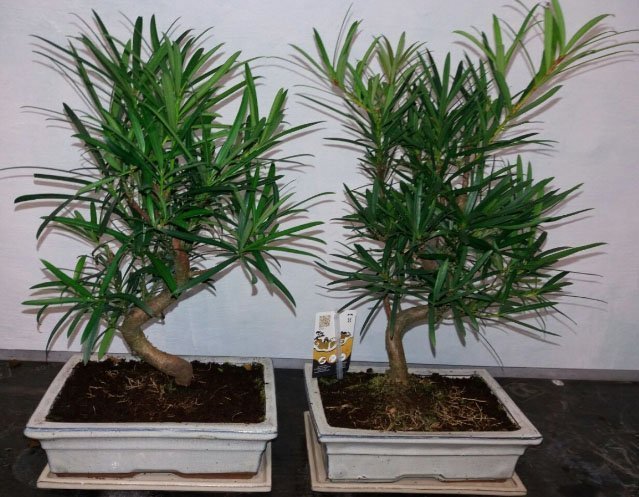

Dracaena formed in this way also resemble bonsai.
FAQ
However, it is not so easy to take and start the trimming procedure. There are many unresolved issues that need to be discussed in detail.
In order to avoid mistakes, be sure to study them in advance.
What happens if you pinch the top?
If you cut off the top in a favorable period, and most importantly, with a carefully and sharply sharpened tool in accordance with all the rules, then the plant will begin to grow from dormant buds.
Can the top be shortened?
In some cases, trimming the top is not only possible, but also necessary. For example, for the formation of a crown, giving volume, rejuvenation or getting rid of various diseases.
Cutting should take place according to the rules, and it is also desirable that after cutting the plant is properly processed.
How to form a "indoor palm" - step by step instructions
Dracaena at home can grow for a very long time. In this case, the evergreen plant grows with its top, while the lower part of the stem is bare. In the step-by-step instructions, we will consider how to cut the dragon tree to obtain side shoots.
Preparing for the procedure
Two to three days before the planned pruning, it is advisable to carry out preparation, which will allow the plant to safely transfer this procedure and successfully grow new shoots.
First, you need to water the plant so that by the time of pruning, the soil has absorbed the bulk of the moisture, but the lump has not yet had time to dry out.
Secondly, spray the ground part of the dracaena with Epin anti-stress drug. This will help the plant to develop special substances for successfully overcoming the shock state and the speedy growth of new shoots.
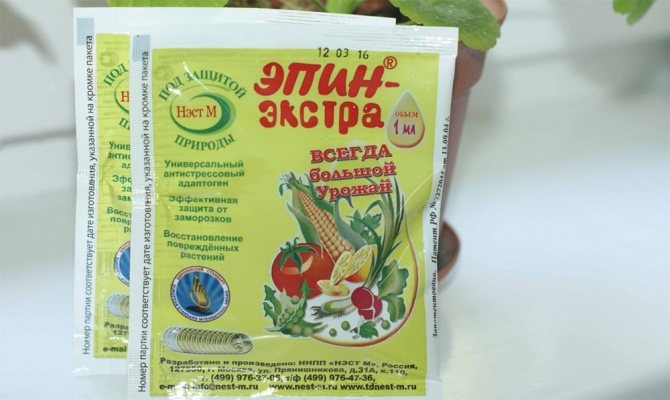

Treatment with a special preparation "Epin" will help the plant to successfully overcome stress
Preparing the plant for pruning
Prepare the dracaena you intend to trim. Place it in a lighted place and at such a level that it is convenient to work. Check that the stem or stems to be cut are clean. If these areas are stained, wipe with a clean cloth.


And this plant has come to prune
Flower shaping tool
You will need a pruner or a sharp knife to cut. The pruning procedure, although very simple, is still an operation, therefore, it is carried out under sterile conditions. Pre-disinfect the tool blade with alcohol. The sharpness of the cutting edges affects the cleanliness of the cut: it should turn out to be smooth, without chipping. Then it is more likely that the apical stalk will take root, and not rot, and the wound on the trunk will heal as soon as possible.
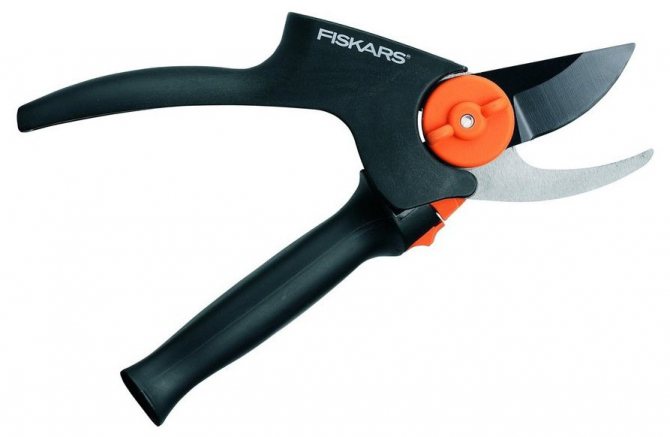

The cutting edge must be sharp
Slice processing
A fresh cut on the trunk should be processed in order to avoid infection. For this purpose, it is desirable to have a special antifungal drug (for example, "Topsin-M") or a substance that can replace it. At home, crushed activated carbon or cinnamon will perform such functions. Garden pitch is needed to cover up the wound. In this way, drying of the tissues adjacent to the cut site is prevented. Instead of a garden varnish at home, you can use a wax or paraffin candle.
Photo gallery: means for processing the dracaena cut


Antifungal drug should be used to treat the cut sites


Garden pitch is needed to cover up plant wounds


Treatment of the cut site with paraffin
How to make an incision correctly
Decide on the location of the cut. Before you cut off a part of the dracaena, take a closer look at it, imagine how it will look when it releases several new branches at the top of the remaining stem, and then decide at what height the part of the plant will be cut off.
First you need to decide on the location of the cut
The cut should be straight. Complete it in one motion.
The cut on the trunk must be straight
Rooting the crown
Place the cut off top of the plant on rooting. If it is covered with leaves, cut the leaves to a quarter or a third of the cutting height. Place in a glass of water, where add a tablet of activated charcoal or a small piece of charcoal to block the development of pathogenic microorganisms and rotting of the cuttings.
If the cut part of the plant is rather long, from 20 cm or more, you can divide it into several parts 12-15 cm long, process the upper cuts as described above, and also put in a container with water for rooting, so that you can later plant it in the ground.
After about a month, roots will appear on the handle
Top dressing to stimulate the germination of dormant buds
After three to four days, when the plant overcomes the shock state after pruning, it is necessary to feed the plant at the root and along the stem with fertilizer with a high nitrogen content. Such dressing is carried out after watering to prevent root burns. The easiest way is to use ammonium nitrate at the rate of a teaspoon per three liters of water. But if possible, it is better to use a specialized fertilizer with an improved composition of Plantafol in a ratio of 30:10:10.
Top dressing is repeated every 2 weeks for 2-3 months, until new shoots reach a length of 4-6 cm.
The plant is very responsive to feeding
Video: formation of the crown of dracaena Marginata, control of branching, pruning of lateral shoots, rejuvenation of the plant
What species need to be trimmed?
Not all dracaena can be pruned. In fact, there are certain species that are in dire need of this planned procedure. Others, on the contrary, do not accept this, begin to wither and die. Let's find out what types of dracaena should be pruned. Let's consider these nuances in more detail in order not to harm your pets.
Retracted (Reflexa)
This flower has pointed leaves, striped color with a dark green tint. The stem is thick, growing up to a meter in height.
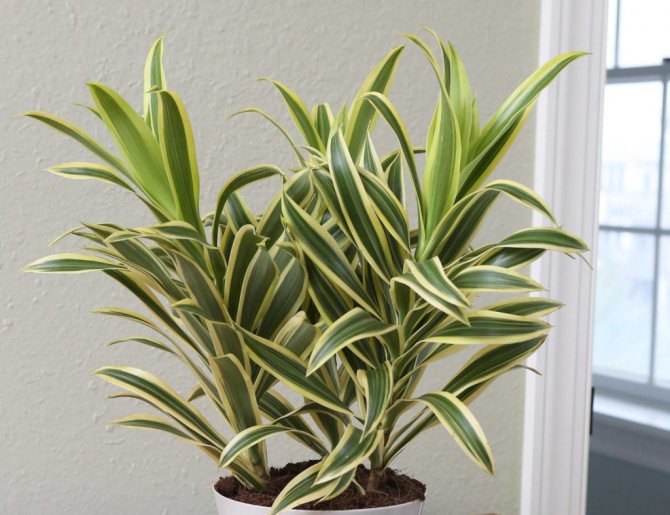

Fragrant (Fragrans)
It has long leaves that reach a length of up to half a meter. Glossy, dark green paint, light stripes. It blooms at home.
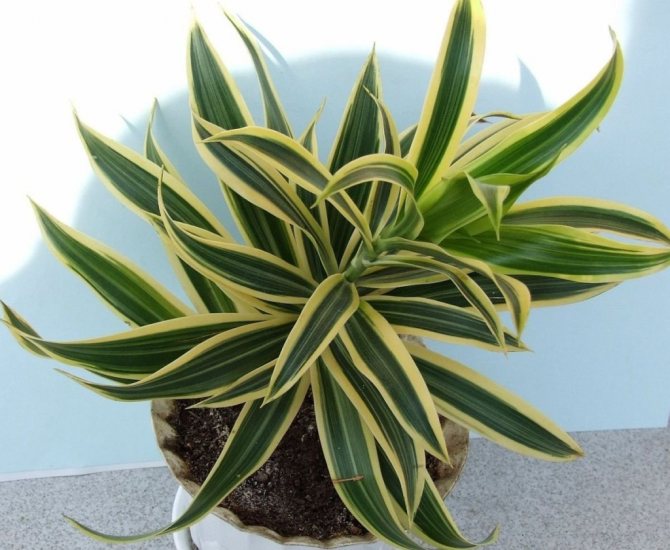

Escaping surculosis (Surculosa)
The plant is bright green, leaves are rounded, have a pointed end. The coloration is spotty. The trunk is thick.
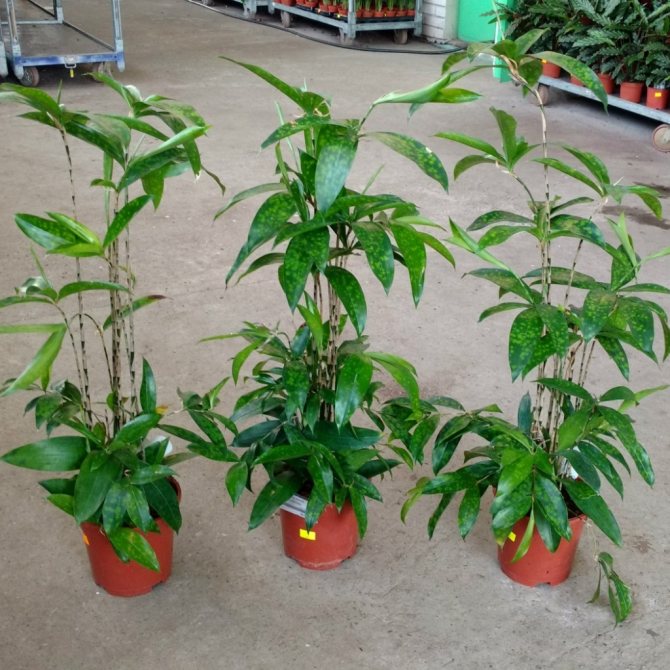

Dracaena care after pruning
Since the plant has undergone surgery, it is necessary to create suitable conditions for a speedy recovery:
- Keep the dracaena at a comfortable temperature in the range of 20–24 ° C.
- Give the plant a bright spot out of direct sunlight. If the pruning took place in autumn - winter, it is necessary to supplement the plant with fluorescent lamps, which you use at home, so that the total length of daylight hours is at least 12 hours.
- Monitor soil moisture carefully. When the topsoil dries up by 4–6 cm, pour it with warm soft water or a solution with fertilizer.
- Dracaena loves high humidity. Do not forget to spray its crown with water at room temperature.
- For uniform development of the crown, do not forget to periodically slightly turn the container with the plant in relation to the light source.
Possible pruning problems
Any organism in a state of stress, which is also the removal of a part of a plant, becomes more vulnerable to adverse factors. After the pruning procedure, you should treat the plant with increased attention for several months.
Be more careful with watering. It is necessary to prevent overflow and overdrying of the earthen coma. Since the dracaena has no crown or part of it, the plant cannot absorb as much moisture as before. When overflowing, the roots cannot breathe. But the soil should not dry out either, since the plant needs strength to germinate new buds.
Protect the dracaena from drafts. Temperature drops for a weakened plant are dangerous.
The main goal is to prevent disease
Take a close look at the ground part of the plant once a week. Pests and diseases are more likely to settle on a weakened plant than on a healthy one. If insects are detected, it is necessary to treat the trunk and the rest of the crown with an insecticide, for example, Agravertin, as soon as possible. If a crown remains on the dracaena and spots of various colors appear on the leaves, your plant has been attacked by pathogenic microflora.In this case, spray the plant with one of the fungicides (Topsin-M, Fundazol). Chemical treatment should be carried out in non-residential premises twice with an interval of 7-10 days.
Root update
Feel the stem and branches of the dracaena occasionally. A decrease in tissue elasticity signals problems with the root system. It is necessary to remove the dracaena from the pot and check the condition of the roots. Cut off the hollow, darkened and dead roots, replant the dracaena again in fresh soil, applying the root formation stimulator "Kornevin".
Once upon a time, I had a dracaena, and it grew up big, very large, and I decided to cut it off and cut it off (my husband said that it looked like she was killed), it turned out something with three branches, specially made different heights, if suddenly several the kidneys will burst - they may not interfere with each other. Places of cuts covered with coal, filled with wax. I divided the cuttings into 2 parts - a total of six cuttings and the main plant came out. A month has passed, on two pruned branches 7 buds hatched, and on one - 3 (thank God); I don’t know how this exuberance will get along now, I didn’t count on such a breakthrough.
Lenka_minsk from July 18, 2012
Dracaena is a plant that is responsive to care. Knowing the optimal conditions for keeping and simple techniques for forming a crown, even a novice florist is able to turn a plant into a luxurious, attractive decoration for every room.
Category: Pen stroke 04
Pruning dracaena at home is one of the most important elements of caring for an ornamental plant. The purpose of such an event is the most correctly formed aerial part of the room culture. In order to obtain an attractive crown, it is necessary to trim the indoor palm not only competently, but also in a timely manner.
Currently, several main reasons are well known in which the cutting of an indoor ornamental plant is vital:
- in order to preserve the compactness of the room dracaena;
- in order to maintain the most attractive appearance;
- for sanitary purposes.
If the false room palm has grown too high, almost to the ceiling, then a breakdown of the trunk is often observed, and to reduce the risk of this phenomenon, primary pruning is used. In indoor floriculture conditions, strong stretching of the plant should not be allowed, therefore, the image is carried out when a height of 0.3-0.4 m is reached. The stem part is cut at the required height, which allows you to maintain compactness and an attractive appearance. A broken plant also needs to be pruned correctly.
If the already branched houseplant has grown strongly or has become insufficiently decorative, with ugly growing shoots, then the dracaena will need formative pruning. A diseased plant with dry or decaying shoots undergoes immediate sanitary pruning, which involves the removal of all diseased parts. Despite the fact that after sanitary pruning, in most cases, the plant is capable of losing its visual appeal for a long time, such an event allows you to preserve the ornamental culture and achieve branching of lateral shoots.

